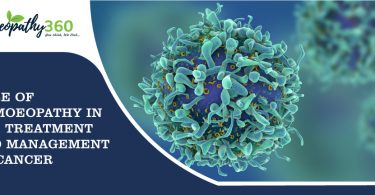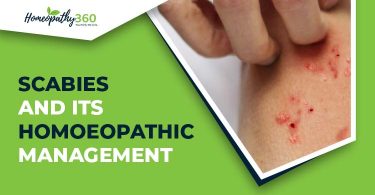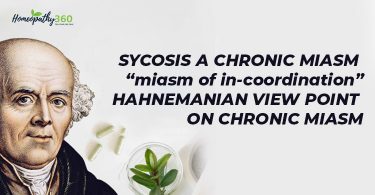ABSTRACT ;
Alstonia scholaris of family Apocynaceae is known to be the best home remedy for high fever since antiquity and is gaining immense popularity among Homoeopathic physicians for its restorative tonic effects in case pertaining to post-COVID illness. Having a post-COVID condition adds to the already distressing challenge of recovering from COVID illness. The following article attempts to discuss, summarize and review the ethnopharmacological relevance of lesser known Homoeopathic remedy Alstonia scholaris in the light of post-COVID illness.
1 .INTRODUCTION ;
The utilization of ethnomedical data of lesser known Homoeopathic remedies have immensely added to the healthcare in traditional system of medicine. This has further led us to consider that these lesser known remedies might be put to use in health conditions of recent times. Post-COVID conditions are a wide range of new, returning, or ongoing health problems people can experience four or more weeks after first being infected with the virus that causes COVID-19. These post-COVID conditions may include new or ongoing symptoms, multi organ effects of COVID-19 and effects of COVID-19 illness or hospitalization.[1] Even people who did not have COVID-19 symptoms in the days or weeks after they were infected can have post-COVID conditions. People commonly report experiencing different combinations of the following symptoms: diarrhea, fast-beating or pounding heart, headache, difficulty breathing, cough, tiredness, sleep problems, chest or stomach more so. Preclinical studies have shown that it possesses anti-microbial, anti-diarrheal, anti-plasmodial, anti-oxidant, anti-inflammatory hepatoprotective, nootrophic, anti-stress, anti-fertility, immunomodulatory, analgesic, anti-ulcer, wound healing, anti-cancer, chemopreventive, radiation protection, radiation sensitization, and chemosensitization activities. To get rid of this post-COVID long term symptoms and complications, Homoeopathic management helps in reducing these ill-effects after fever without getting things more complicated.
Alstonia is a bitter tonic, febrifuge, diuretic, anthelmintic, stimulant, carminative, stomachic, aphrodisiac, galactagogue and haemostatic. It is used as a substitute for cinchona and quinine for the treatment of intermittent periodic fever. An infusion of bark is given in fever, dyspepsia, skin diseases, liver complaints, chronic diarrhea and dysentery. Alstonia scholaris was introduced in 1866 in Monthly Homoeopathic Review, Vol. X, 508 and in Allen Encyclopaedia Materia Medica, Vol. I, p. 192. In homeopathy, its stem bark in used to prepare the mother tincture. From mother tinture the next potency prepared is 2x which contains one part of the mother tincture with two parts of purified water and seven parts of strong alcohol. The 3x and higher potencies are prepared with dispensing alcohol. These trees species are rich in secondary metabolites such as antioxidants, alkaloids, saponins, flavonoids, terpenes
and tannins and are widely used in traditional treatment systems.
2. HISTORY ;
Scholar tree is an elegant evergreen tree, found in most parts of India. [2] The generic name commemorates the distinguished botanist, Prof. C. Alston of Edinbargh, 1685-1760.The species name scholaris refers to the fact that the timber of this tree has traditionally been used to make wooden states for school children. On the Western Ghats of India, tribal people are reluctant to sit or pass under the tree, for the fear of the devil. Local superstition about its devilish character mainly stems from the fact that its milky sap is rich in poisonous alkaloid, and thus the tree is shunned by cattle.
Among traditional plants, Alstonia scholaris (Family Apocynaceae), popularly known as “Saptaparni” in Hindi or the ‘Indian devil tree’ has been used in folk medicines for the treatment of diarrhea, dysentery, malaria, fever and cardiac as well as respiratory problems.[3] In traditional medicine, the milky juice of plant is applied on injuries and ulcers to treat pain including rheumatic pains. The bark is known as ditabark, used by Indians as traditional medicine to treat diarrhea, dysentery, gastrointestinal troubles, asthma, malaria, jaundice, cancer and many other ailments. It has also been used as an aphrodisiac. [4] When damaged, the bark lets out sticky milky latex, which is also valued for its medicinal properties. This is used by Ayurveda physicians in formulations, and not to be consumed as is.
3. MATERIALS AND METHODS ;
Literature about Alstonia scholaris was collected by using both electronic and library search. Additionally, referred books on traditional medicine and ethnopharmacology were also utilized for receiving traditional records about both the plant species.
4. SOURCES ;
The bark of Alstonia scholaris contains Ditamine, Echitamine, Echitanine, Echicaoutchien, Echicerin, Echitin, Echitein, Echiretin and fatty acids. [5]
-Tannins; Tannins that become stored in the bark of trees protect the tree from being infected by bacteria or fungi. Tannin also exert other physiological effects human health, such as to accelerate blood clotting ,reduce blood pressure, decrease the serum lipid level, produce liver necrosis and modulate immunoresponses.
-Saponins; Saponins are naturally occurring compounds that are widely distributed in all cells of legume plants. Clinical studies have suggested that these health –promoting components, saponins, affect the immune system in ways that help to protect the human body against cancers, and also lower cholesterol levels. Saponins decrease blood lipids, lower cancer risk, and lower blood glucose response. A high saponins diet can be used in the inhibition of dental caries and platelet aggregation, in the treatment of hypercalciuria in human, and as an antidote against acute lead poisoning.
-Terpenes; In nature, terpenes are defence system to stop plants getting eaten by herbivores or damaged by high temperatures. For humans, different terpenes have different effects – including different health benefits. Each plant has a unique blend of terpenes. This is called its terpenes profile. It is used as an anti-inflammatory and antioxidant, to aid detox and to fight fungal infections.
5. DISCUSSION ;
5.1. PHYSIOLOGICAL ACTION OF ALSTONIA SCHOLARIS
Used as a tonic; Alstonia is a bitter tonic, febrifuge, diuretic, anthelmintic, stimulant, carminative, stomachic, aphrodisiac, galactagogue, and haemostatic. [6]
In post-fever effects; it helps to increases the digestive power and cure the debilitating effects after fever. It has proved a valuable remedy in chronic diarrhea and the advanced stages of dysentery. It is used as a substitute for cinchona and quinine for the treatment of intermittent periodic fever.
Skin ulcer; the bark paste is applied locally in chronic skin ulcers and latex is used to clean the wounds.
Fever bark; Used in high blood pressure.
In addition to the cytotoxic effects, Alstonia scholaris is also observed to possess radiomodulatory, chemomodulatory and chemopreventive effects, which is efficacious in the treatment and prevention of cancer. [7]
5.2. IMPLICATION-PHYSIOLOGICAL ACTION OF ALSTONIA SCHOLARIS ;
According to William Boericke- Malarial diseases, with diarrhea, dysentery, anemia, feeble digestion, are the general conditions suggesting this remedy. Characteristics are the gone sensation in stomach and sinking in abdomen, with debility. A tonic after exhausting fevers. Painless watery stools. Diarrhea immediately after eating.
Encyclopedia of pure materia medica by T.F Allen; Violent purging and cramp in the bowels, vertigo, and general weakness.
6. CONCLUSION ;
The proving of Alstonia scholaris was done so many years before, and was available in source like Encyclopedia of pure materia medica and William Boericke. Those proving contain all the symptoms that usually occur as a consequence after exhausting fever, which now we can consider as post covid long term symptoms. The difference is just in terminology. Therefore, we can aptly say that in homoeopathy, Alstonia scholaris in form of mother tincture helps in curing of ill-effects from post-covid fever.
7. REFERENCES ;
1) Centre for Disease Control and Prevention. Post-COVID conditions. Updated: July 12, 2021. Available from: https://www.cdc.gov/coronavirus/2019-ncov/long-term-effects.html. Accessed on Sept 09, 2021.
2) Alstonia scholaris. Available from: http://www.tropicalfloridagardens.com/tag/alstonia-scholaris/ Accessed on Sept 05, 2021.
3) E-flora of Gandhinagar, Gujrat, India- Presenting the Plants in electronic format- Alstonia scholaris. Available from: https://www.efloraofgandhinagar.in/plant-details.php?cateUrl=tree&plantUrl=alstonia-scholaris. Accessed on Sept 09, 2021.
4) Alstonia scholaris/Saptaparni. Available from: https://www.dabur.com/amp/in/en-us/about/science-of-ayurveda/herbal-medicinal-plants/alstonia-scholaris-medicinal-uses Accessed on Sept 09, 2021.
5) Khyade MS, Kasote DM, Vaikos NP. Alstonia scholaris (L.) R. Br. and Alstonia macrophylla Wall. ex G. Don: A comparative review on traditional uses, phytochemistry and pharmacology. J Ethnopharmacol. 2014 Apr 11; 153(1): 1-18. doi: 10.1016/j.jep.2014.01.025.
6) Baliga MS. Review of the phytochemical, pharmacological and toxicological properties of Alstonia Scholaris Linn. R. Br (Saptaparna) Chin J Integr Med. 2012 Mar 28. doi: 10.1007/s11655-011-0947-0. doi: 10.1007/s11655-011-0947-0.
7) Baliga MS. Alstonia scholaris Linn R Br in the treatment and prevention of cancer: past, present, and future. Integr Cancer Ther. 2010 Sep; 9(3): 261-9. doi: 10.1177/1534735410376068
About Author:
Komal Prajapat1*, Karanpreet Nahar2, Subhash Kaushik3
1. PG Scholar, National Homoeopathic Medical College and Hospital, Lucknow, UP.
2. Research Officer (Homoeopathy)/Scientist-1, Dr DP Rastogi Central Research Institute of Homoeopathy, NOIDA,Uttar Pradesh, India.
3. Research Officer (Homoeopathy)/Scientist-4, Dr DP Rastogi Central Research Institute of Homoeopathy, NOIDA, Uttar Pradesh, India.





